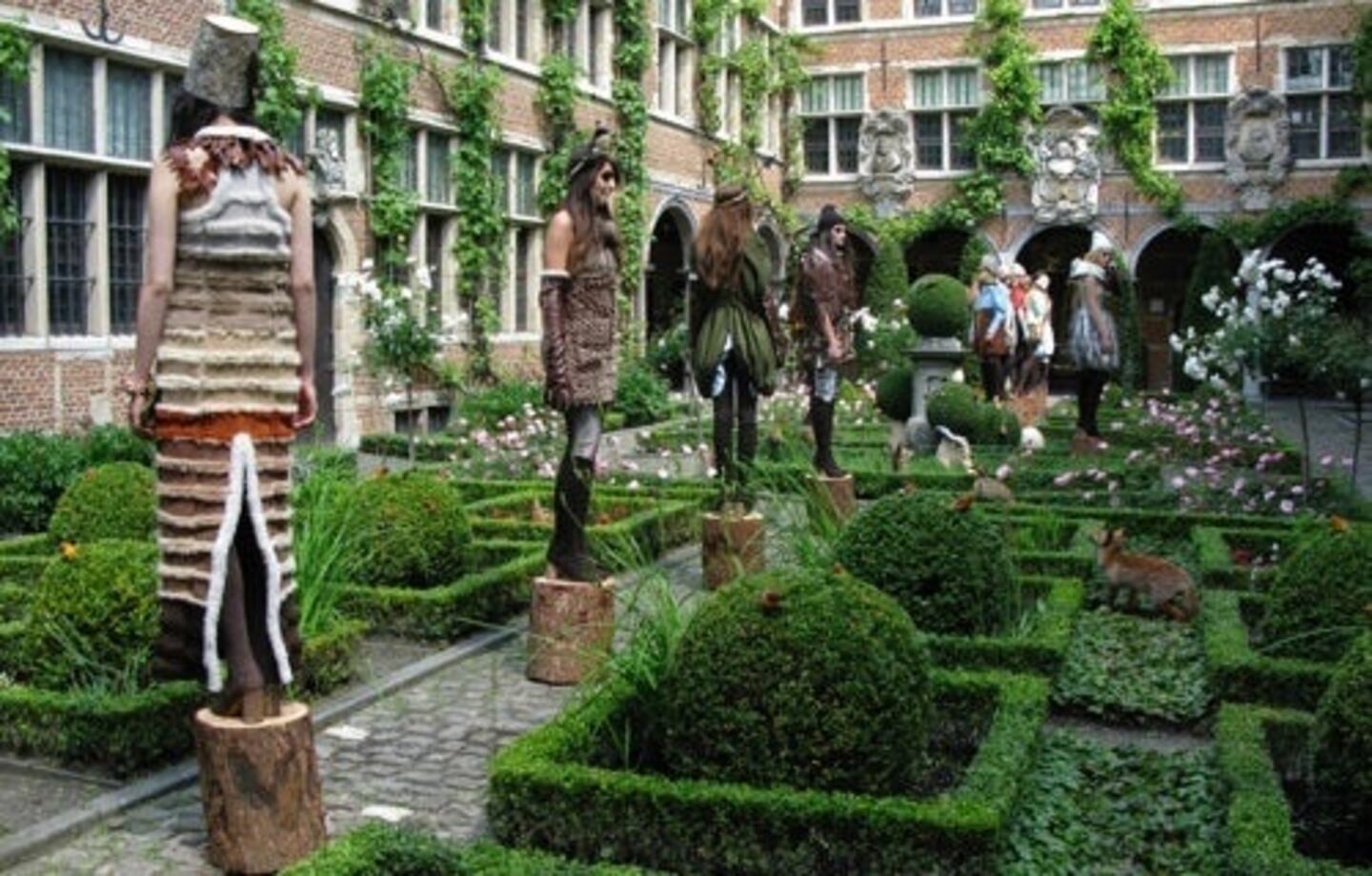
The Business of Fashion
Agenda-setting intelligence, analysis and advice for the global fashion community.

Agenda-setting intelligence, analysis and advice for the global fashion community.

ANTWERP, Belgium — It's been over twenty years, but the Antwerp Six still holds huge historical importance in fashion, which says a lot in today's fast fashion world. Last season, I popped into the Paris shop of Dries van Noten, and saw Cathy Horyn of The New York Times, Virginie Mouzat of Le Figaro, and Suzy Menkes of the International Herald Tribune all getting a little bit of between-show shopping out of the way before hitting the Haider Ackermann show. For these important editors, Dries is still the go-to designer for elegant clothing and accessories in his colourful signature style.
Van Noten and fellow members of the so-called Antwerp Six (including Ann Demeulemeester and Dirk Bikkembergs) first took the international fashion scene by storm when they rented a truck and set up shop at London Fashion Week in 1987 (or 1986, or 1988, depending on whom you ask and which source you are reading). What is certain is that were recently minted graduates of the Royal Academy of Fine Arts and shortly after hitting London developed international cult followings amongst the fashion faithful. Not only did their London appearance put Belgium on the fashion map, it also positioned the Antwerp Academy, as it is known colloquially, as one of the world's top fashion schools.
I was delighted, therefore, to accept the invitation of Walter Van Beirendonck, another member of the Antwerp Six and head of the fashion department at the Antwerp Academy to sit on a truly distinguished jury to review the thesis collections of the Academy's 2009 Masters students earlier this month. Over the course of a day and half, we experienced an overload of stimuli that heightened the senses (visual, aural and olfactory) and provoked the mind. Each designer created an installation to present their work, at times with startling and breathtaking effect, like Stephanie D'Heygere's Humanimalus collection in the Garden of the Plantin & Moretus Museum.
From beautiful garden to classical sculptural studio to back-alley building and rooftop dome, we met 14 designers and listened to the stories, experiences and passions that informed their collections. The day ended with a huge runway show in an old hangar on the river, featuring the designs of the masters students, but also those of the immensely talented bachelors' students who will follow in their footsteps. It was one of the highlights of my professional career and one of the most creative displays of fashion I have witnessed — chicken soup for my economically-battered fashion soul.
ADVERTISEMENT
I was honoured to be among some true fashion greats like Suzy Menkes and Olivier Theyskens and a new generation of fashion thinkers and doers, including Leonardo Girombelli of thecorner.com and Junsuke Yamasaki of Dazed & Confused Japan. Each of the 12 jury members brought a unique industry and geographic perspective to the table. Combined with the expertise of the teachers who also sat on the jury, we had some very interesting deliberations. I learned something from each and every one of them.
I also learned an important fashion business lesson while I was there. While none of the Antwerp Six has created a global brand to rival Gucci or Yves Saint-Laurent, none of them have really aimed for that in the first place. They keep their businesses small and focused, with limited distribution, few licensing deals and little or no advertising to speak of.
This is in stark contrast to Martin Margiela's business which, under the ownership of Renzo Rosso, has gone from virtual anonymity and unquestioned product integrity to the big brand fashion model, churning out handbags and eyewear in increasingly high-profile stores around the world. Rumours abound that Margiela himself is no longer actively involved in the design or presentation of the collections.
His absence has not gone unnoticed by fashion experts and loyal customers. Recently the JC Report lamented that "a shift has been apparent in the quality of the products since the partnership with Diesel began: the amazing wool and cotton zip-front sweaters are no longer the weight of a vintage military cloak, the cut of the t-shirts went from interesting to extremely basic and banal. What's more, Margiela showed furniture and interior prototypes at the Salone Del Mobile that exuded a mass production treatment of the usual artisan pieces."
Maybe there is a lesson here for all of us? It is the very fact that the Belgian fashion businesses have remained small, focused and high-quality that makes them special. They still need to be economically sound, mind you, but they doesn't mean they have to be big. While there will always be room for the mega fashion brands, increasingly, I believe we will see the re-emergence of privately-owned niche fashion businesses that operate on a more human scale, which enable the founding designers to be involved in all aspects of the business, ensuring that their visions are realized from product to retail with integrity, creativity and yes, humanity.
Imran Amed is editor of The Business of Fashion.
From analysis of the global fashion and beauty industries to career and personal advice, BoF’s founder and CEO, Imran Amed, will be answering your questions on Sunday, February 18, 2024 during London Fashion Week.
The State of Fashion 2024 breaks down the 10 themes that will define the industry in the year ahead.
Imran Amed reviews the most important fashion stories of the year and shares his predictions on what this means for the industry in 2024.
After three days of inspiring talks, guests closed out BoF’s gathering for big thinkers with a black tie gala followed by an intimate performance from Rita Ora — guest starring Billy Porter.